Solar eclipse of March 16, 1942
A partial solar eclipse occurred on March 16, 1942. A solar eclipse occurs when the Moon passes between Earth and the Sun, thereby totally or partly obscuring the image of the Sun for a viewer on Earth. A partial solar eclipse occurs in the polar regions of the Earth when the center of the Moon's shadow misses the Earth.
| Solar eclipse of March 16, 1942 | |
|---|---|
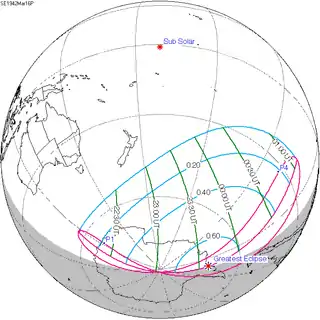 Map | |
| Type of eclipse | |
| Nature | Partial |
| Gamma | -1.1908 |
| Magnitude | 0.6393 |
| Maximum eclipse | |
| Coordinates | 72.2°S 76.8°W |
| Times (UTC) | |
| Greatest eclipse | 23:37:07 |
| References | |
| Saros | 148 (17 of 75) |
| Catalog # (SE5000) | 9379 |
Related eclipses
Solar eclipses 1939–1942
This eclipse is a member of a semester series. An eclipse in a semester series of solar eclipses repeats approximately every 177 days and 4 hours (a semester) at alternating nodes of the Moon's orbit.[1]
| Solar eclipse series sets from 1939–1942 | ||||||
|---|---|---|---|---|---|---|
| Descending node | Ascending node | |||||
| Saros | Map | Saros | Map | |||
| 118 | April 19, 1939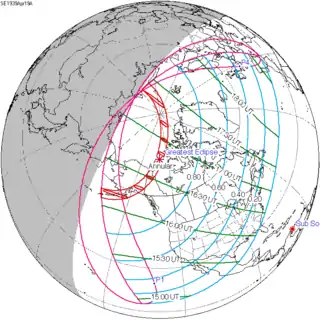 Annular |
123 | October 12, 1939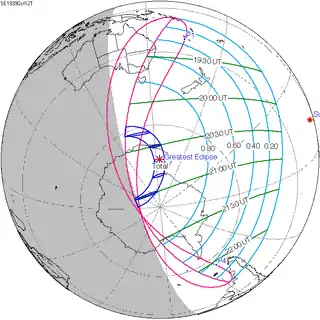 Total | |||
| 128 | April 7, 1940 Annular |
133 | October 1, 1940 Total | |||
| 138 | March 27, 1941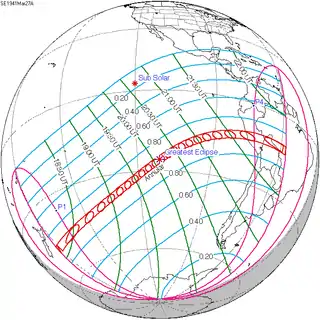 Annular |
143 | September 21, 1941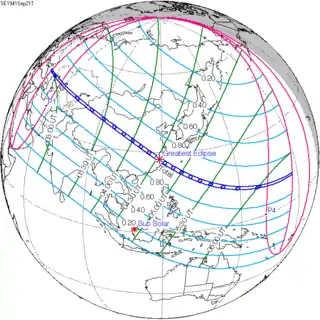 Total | |||
| 148 | March 16, 1942 Partial |
153 | September 10, 1942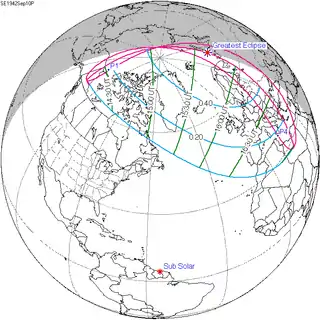 Partial | |||
| The partial solar eclipse on August 12, 1942 occurs in the next lunar year eclipse set. | ||||||
References
- van Gent, R.H. "Solar- and Lunar-Eclipse Predictions from Antiquity to the Present". A Catalogue of Eclipse Cycles. Utrecht University. Retrieved 6 October 2018.
External links
- Earth visibility chart and eclipse statistics Eclipse Predictions by Fred Espenak, NASA/GSFC
This article is issued from Wikipedia. The text is licensed under Creative Commons - Attribution - Sharealike. Additional terms may apply for the media files.
.jpg.webp)

